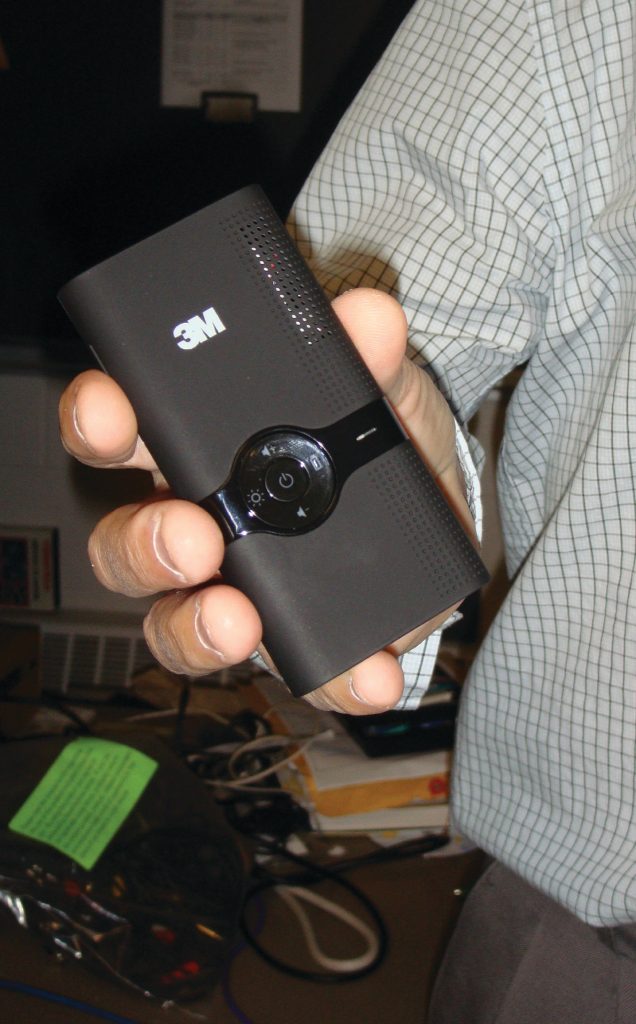In most of today’s overcrowded schools, portable classrooms are the trailer-like structures squatting in the yard behind the main building.
But Lorenzo Rossi, a computer science teacher at Toronto’s Cardinal Carter Academy for the Arts (CCAA), has created a different kind of portable classroom—one that he can carry in his pockets.
Time is a finite resource at CCAA, as mandatory credit requirements leave students with little opportunity for electives, like computer science. Afterschool courses are also out of the question at the only Catholic all-arts school in the city, as many students commute over an hour to attend class.
Concerned that students were graduating from the high school with little exposure to computer science, the innovative Rossi joined forces with a colleague, Catherine Kong, who specializes in graphic design and computer science. Working together, the two teachers developed a way to bring the classroom to the students instead of the other way around.
“I saw students shared my passion for technology,” said Rossi. “They have the latest gadgets like smartphones and MP3 players, and I knew there must be a way to combine learning with entertainment.”
 During the summer and in their free time, Rossi and Kong developed clear course modules. Content was created on PowerPoint and then captured as digital images with an audio soundtrack added to explain the slides to students, just as if they were in class.
During the summer and in their free time, Rossi and Kong developed clear course modules. Content was created on PowerPoint and then captured as digital images with an audio soundtrack added to explain the slides to students, just as if they were in class.
“We knew the key to success with this program would be convenience and clarity,” said Rossi.
After enrolling in the program, students receive handheld Microsoft Zune MP3 players, which were donated to the school, with pre-downloaded simulated classroom modules. Then, students learn at home, at school or on-the-go. The result: the Zune Campus.
“The program is easily accessible on Zunes in their pockets or backpacks, so they can learn whenever they have free time,” said Rossi. “They’re much more familiar with MP3 players than chalkboards. It only makes sense they learn well with the devices.”
In addition to overcoming scheduling challenges, Rossi’s program accommodates students with hearing or visual impairments.
“CCAA educates 850 of the top students in the Greater Toronto Area who want to excel academically and want to be here—they audition to be selected into the school,” explained Rossi. “However, being driven to succeed doesn’t make students immune to learning challenges, nor does it ensure they will be engaged in what they’re learning.”
With the digital learning device, students can learn independently at their own pace. They can fast forward through sections they already know, or replay any unclear portions, then approach Rossi and Kong directly with questions.
When students do bring Rossi a question, the world is his classroom, thanks to the advanced projection technology he carries in another pocket.
“Technology today is amazing. I can reach for the MP3 player in one pocket, and take the MPro120 out of the other,” said Rossi. “Instead of crowding around a small screen, within seconds, I can project the images anywhere, even on the ceiling, and hold an impromptu tutorial to solve students’ specific needs.”
According to Rossi, the MPro120, a mobile projection unit from 3M, has a crisp, clear image from light-emitting diodes and can run for more than three hours with full brightness and volume.
Although he uses a high definition projector in his classroom, and hopes the device will be HD in the near future, he finds the MPro120 complements his targeted teaching program perfectly as it’s small, effective and works well at all angles with moving and static images at screen sizes as large as 50 inches. Also, as it only requires one cable and comes with a universal tripod, students can use it unassisted to study together.
This transition to modern media came with skepticism from peers, but the results are outstanding. Last year, 35 students graduated from the grade 10 computer science pilot program with a class average of 93.5 percent.
There is potential for this type of teaching to be used for a variety of courses in all settings, including remote communities where people do not typically have access to courses like computer science. In fact, Kong has already converted two of her most difficult grade seven math class topics to modules with study notes to help less-enthused students learn the subject in what is perceived to be a more interesting way.
The program is expected to be well-received by the world when Rossi and Kong present their project at a conference in Singapore as finalists for the Microsoft Innovative Teaching Award in March 2010.
“Making learning accessible to students is exactly why I became a teacher,” said Rossi. “I hope my students leave understanding that being up-to-date on the latest technology trends is not only interesting, it’s a necessity, and, I believe Marshall McLuhan and others would agree, what is better than to make the medium the message.”
ABOUT THE AUTHOR
Richard Chartrand
Richard Chartrand is the general manager of the display and graphics business at 3M Canada.
This article is from Canadian Teacher Magazine’s January 2010 issue.












